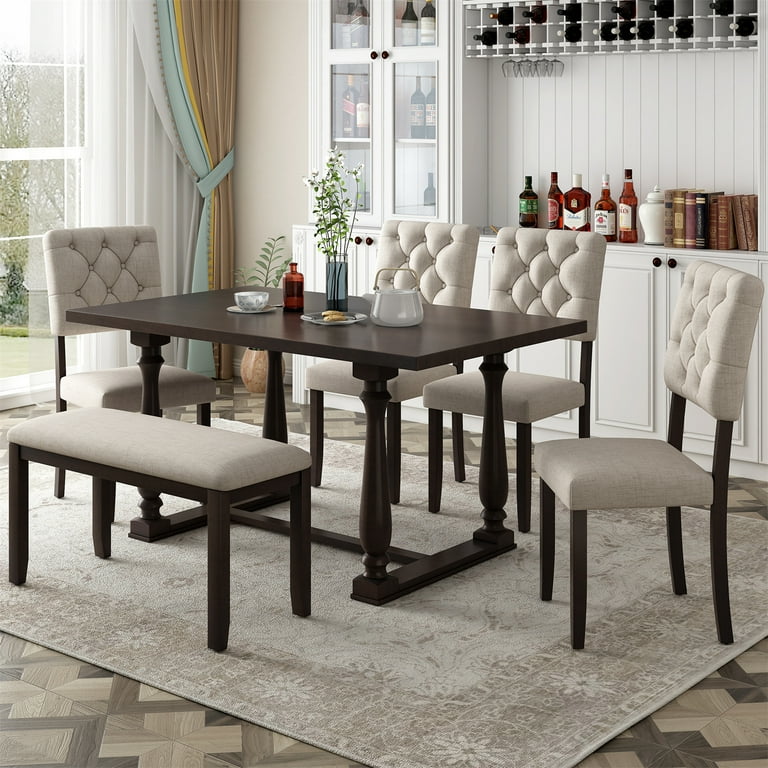From Standard to Modern: Find the Perfect Dining-room Table Legs for Your Design
While classic styles such as cabriole and transformed legs stimulate a sense of ageless refinement, contemporary styles like barrette and geometric alternatives present a chance for striking aesthetic interest. As you think about these components, the inquiry continues to be: just how can you perfectly integrate these varied leg designs to create a harmonious dining experience?
Comprehending Table Leg Styles
The range of dining-room table leg designs can substantially affect both the appearances and functionality of the space. Each leg design adds one-of-a-kind aesthetic components and sensible attributes, providing to diverse style preferences and usage requirements. Understanding these styles is crucial for selecting the right table that aligns with your overall interior design vision.
As an example, tapered legs provide a clean, timeless appearance that can improve a space's style, while pedestal bases provide security and take full advantage of legroom, making them excellent for smaller sized areas. Hairpin legs, a characteristic of mid-century modern design, present an industrial flair, enabling a ventilated, open feel. Trestle legs evoke rustic beauty, supplying durable support and a feeling of eternity.
Wood legs can bring warmth and structure, whereas steel options commonly convey a smooth, modern ambiance. Ultimately, comprehending table leg designs is important for producing a natural dining area that shows personal style while ensuring practicality and convenience.
Traditional Table Leg Options
When choosing dining-room table legs, traditional choices often embody ageless sophistication and workmanship. These layouts reflect a rich heritage and a commitment to high quality, making them suitable for those that value classic aesthetic appeals.
Among one of the most legendary typical leg designs is the cabriole leg, characterized by its graceful curved shape. This design frequently features ornamental makings and is most frequently discovered in Queen Anne and Chippendale furniture. An additional preferred alternative is the transformed leg, which flaunts a collection of smooth, rounded shapes that supply a traditional look while preserving stability.
Additionally, the straight leg, while easy, provides a durable and unadorned framework that can mix effortlessly with a range of tabletop styles. For those drawn to ornate detailing, claw-and-ball feet legs stimulate a feeling of magnificence and can act as a spectacular focal point in any eating area.
Finally, pedestal bases, although not purely legs, give an alternate conventional option that permits enough legroom and can be magnificently carved. Each of these traditional leg designs adds to the general setting of a dining-room, marrying feature with visual allure.

Modern Table Leg Layouts
Modern table leg styles offer a varied variety of styles that highlight clean lines and cutting-edge materials. These styles frequently focus on functionality while acting as striking focal points within an eating space. Minimal aesthetic appeals are prevalent, with legs crafted from materials such as steel, glass, and engineered timber, which add to a ventilated and modern feeling.
One prominent layout is the hairpin leg, identified by its slender, tapered framework that provides security without frustrating the tabletop (dining room table legs). This design is often discovered in mid-century modern-day furniture and can effortlessly enhance various eating table forms. Another pattern is using geometric forms, where legs may handle asymmetrical or angular types, including visual rate of interest and a touch of virtuosity

Blending Styles for One-of-a-kind Rooms
Often, homeowners look for to develop one-of-a-kind eating areas that show their personal design by mixing different style elements. This approach enables the unification of diverse visual appeals, resulting in an unified yet distinct atmosphere. Coupling a rustic wooden table with sleek, modern-day steel legs can produce an attractive contrast that boosts the space's overall charm.
Furthermore, incorporating vintage table dig this legs with modern tabletops can stimulate a sense of background while preserving a modern perceptiveness. Such combinations not just showcase specific taste but likewise encourage creative thinking, enabling homeowners to curate a room that feels both individual and inviting.
Shade plays an essential duty in this blending procedure; selecting table legs that enhance or contrast with the existing shade scheme can improve aesthetic rate of interest. Whitewashed legs can soften the daring of a dark table surface area, creating a balanced visual.
Tips for Choosing the Right Legs
Choosing the right table legs is important for accomplishing both functionality and aesthetic allure in your dining area. Begin by taking into consideration the overall design of your area. Conventional settings take advantage of legs that include elaborate makings or transformed designs, while contemporary areas might ask for sleek, minimalist designs.
Following, assess the height and stability of the legs. dining room table legs. Common table range between 28 to 30 inches in height, so make sure the legs enhance this measurement for comfort. Additionally, durable materials, such as hardwood or metal, can improve stability and durability
Review the leg form as well-- options include directly, tapered, or pedestal styles. Straight legs use a timeless look, while tapered legs can add a touch of beauty. Pedestal bases supply adequate legroom and are excellent for smaller spaces.
Conclusion
In recap, selecting the optimal dining area table legs needs cautious consideration of both contemporary and traditional designs. By balancing leg style, elevation, and material with the total design, a cohesive and welcoming environment can be accomplished.
The variety of eating space table leg styles can dramatically affect both the looks and functionality of the room. Eventually, recognizing table leg styles is important for developing a cohesive eating area that mirrors personal design while making sure usefulness and comfort.One of the most legendary conventional leg designs is the cabriole leg, characterized by its elegant curved form. Straight legs offer a timeless look, while conical legs can add a touch of style.In summary, choosing the perfect eating room table legs needs mindful consideration of both contemporary and traditional styles.